From Alex Palou to Graham Rahal: 33 things to know about the 2023 Indy 500
INDIANAPOLIS – The "Greatest Spectacle in Racing" arrives Sunday when Indianapolis Motor Speedway hosts the 107th running of the Indy 500.
To get you ready for Sunday's race, here are the biggest storylines, trends, topics, teams and drivers to monitor on race day:
1. The good sign for Alex Palou heading into Sunday? Twice in the last five years has the winner of the GMR Grand Prix has swept the May races at IMS. Of course, those on-track performances don’t have much to correlate but momentum can certainly breed confidence and is an indicator of precision at the perfect time.
2. The bad? Only one of the last 13 polesitters of for the 500 has won the race that year (Simon Pagenaud, 2019).
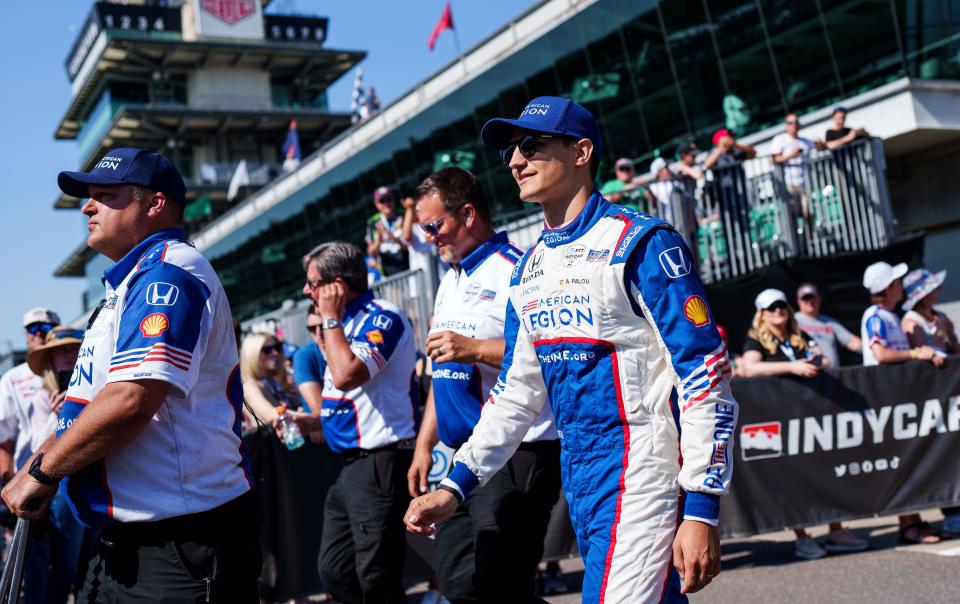
INDY 500: Start time, lineup, live stream, TV, key info for Sunday's race
DANICA PATRICK: Picks her 2023 Indy 500 favorites and sleeper to win
3. When was the last time we had an AJ Foyt Racing car that seemed it could contend for a 500 win? The team owned by the 500’s first four-time winner has seen four top-10s since the 2002 race, but none were better than 9th. Foyt’s last top-5 finishes at IMS came in 2000 when Eliseo Salazar (3rd) and Jeff Ward (4th) achieved the feat. You’d be hard-pressed to find a better racer in this event in the last five years than Santino Ferrucci. Don’t overlook him as a dark horse down the stretch.
4. Ferrucci, though, is in vastly new territory compared to his previous four 500 starts, where he started no better than 15th (last year) with three different teams. He’s made up an astounding 53 positions in those races. All he’s looking for is three on Sunday.
5. Perhaps a new candidate for this race’s biggest mover: A driver who consistently does so across many other races each season, Graham Rahal. The veteran driver’s penchant for less than ideal qualifying speed is no secret, but he’s gained a reputation of being one of IndyCar’s best race-day performers. Starting on the outside of the back row on Sunday, expect Rahal to put on a show in his Dreyer and Reinbold car he’s slid into to replace the injured Stefan Wilson. DRR has looked particularly strong this month as a 500-only program that also includes Ryan Hunter-Reay.
RAHAL: Will sub for Stefan Wilson, who fractured vertebrae in crash, at Indy 500
LEGIT THREAT: Fast and charming Santino Ferrucci just might win Indy 500
6. In the other direction, there have been few (if any) drivers to have given up as many spots across his first three 500 starts than Rinus VeeKay, who is making his fourth top-4 start in as many races (and his third consecutive front row start). Only once, though, has he finished in the top-10 (8th, 2021). A year ago, he crashed out on Lap 39 and finished 33rd.
Records to watch
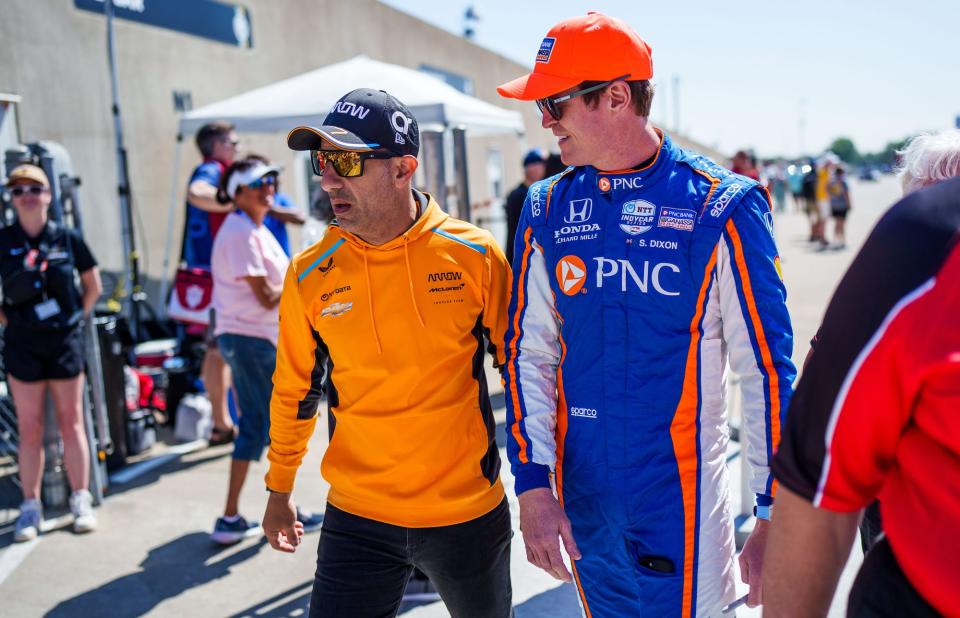
7. Scott Dixon took the all-time laps led lead a year ago (665) over Al Unser Sr. (644). The Ganassi driver’s mark looks to stand for quite some time with only Kanaan (352) among active drivers with at least half the 2008 500 winner’s mark. Helio Castroneves (325), Simon Pagenaud (169), Ryan Hunter-Reay (163), Ed Carpenter (146), Marco Andretti (144) and Will Power (144) are the only members of Sunday’s starting grid with more than 100.
8. You could argue the two most celebrated potential winners would be Scott Dixon and Helio Castroneves, but if either falls one spot short, he would break a deep tie atop the list for most runner-ups (3).
9. Dixon's also tied atop the number of 500s with at least one lap led (15) with Kanaan – a mark that both very well may continue to push forward with their starts inside the top-9 Sunday.
10. More Dixon record hunting – and one he’d love to take his name off the active list for. The Chip Ganassi Racing driver will make his 15th start in between his last (and only) 500 win -- 2008 -- on Sunday. Only Juan Pablo Montoya (2000 and 2015) has had as much time pass between 500 wins – and the Colombian driver made a single start inbetween those victories (2014) as he spent the bulk of his career in F1 and NASCAR.
11. A far less painful list to be on than Dixon’s drought is this: four drivers could match or beat Sam Hanks’ record number of 12 starts before his first 500 win. Hanks grabbed his first and only 500 win in 1957 – and retired. Josef Newgarden will make his 12th start Sunday (more than half of those with Team Penske), while Graham Rahal (16th start), Marco Andretti (18th) and Ed Carpenter (20th start) have been in line to shatter this mark for several years.
12. If he can keep his car clean, Helio Castroneves could take over 2nd-place in race distance traveled in the 500, passing current runner-up Al Unser Sr. (10,890 miles). He’s about 400 miles short of the four-time winner (currently at 10,495), and should he pass Unser this year, he will have done so in four fewer starts. At the moment, Castroneves remains just under 2,000 from A.J. Foyt’s all-time mark (12,272.5 miles) which Super Tex needed his record 35 500 starts to set.
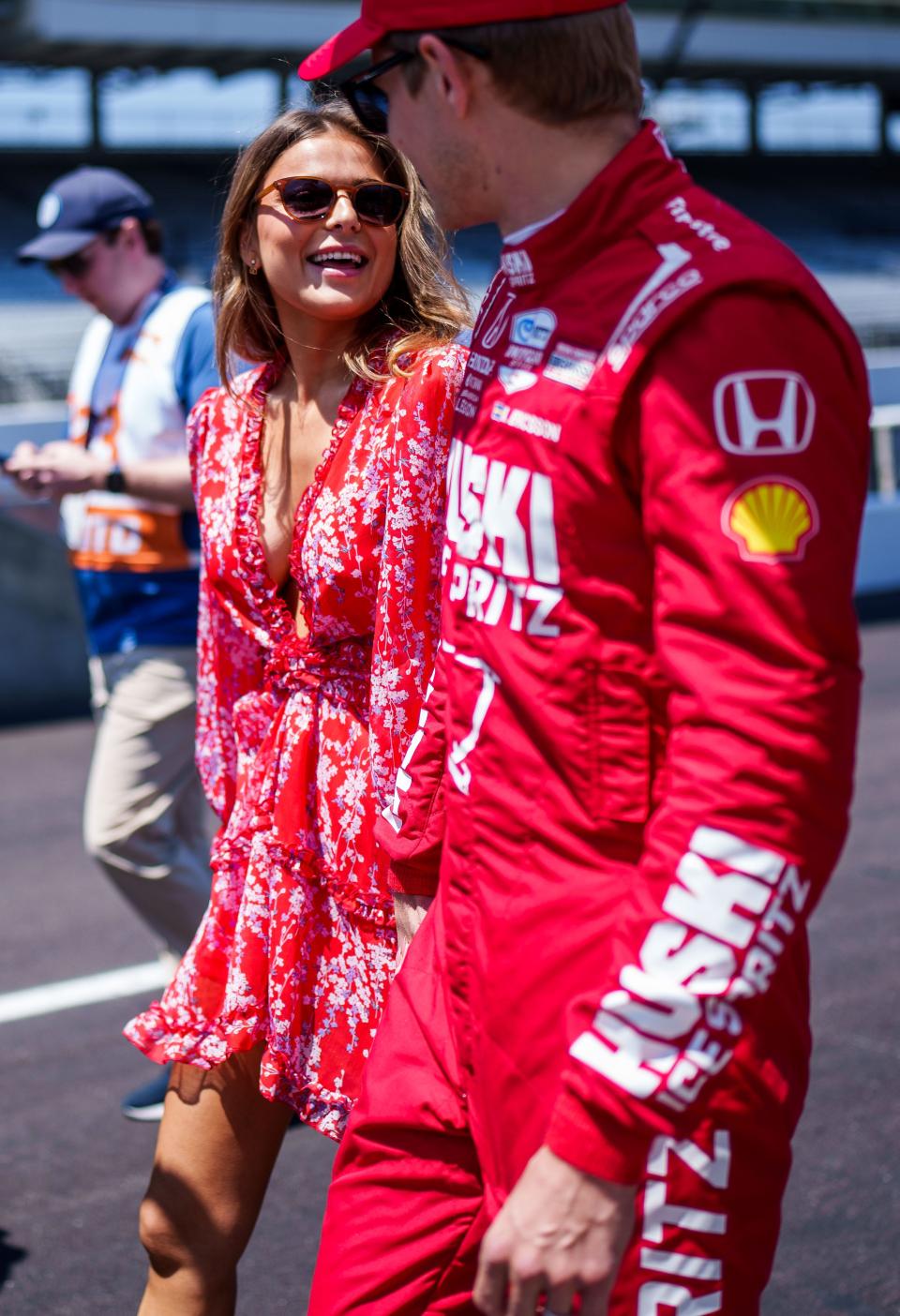
Looking to repeat
13. A year ago, Marcus Ericsson became the 15th 500 winner since our last repeat winner (Helio Castroneves in 2001-02). Only four drivers since then (Dan Wheldon, Dario Franchitti, Castroneves and Takuma Sato) have won the race twice in any form – further proof of just how hard the Greatest Spectacle in Racing is to win. Only five drivers have won the race twice in a row in its 106-year history.
14. A 500 field has only ever had 10 winners, and we have nine this time around (as we had last year, having lost Juan Pablo Montoya and gained Marcus Ericsson). Knowing we’re virtually certain to lose Tony Kanaan from next year’s field, with Helio Castroneves, Takuma Sato and Ryan Hunter-Reay among those without certain futures, that marked doesn't seem likely to be challenged in the near future.
15. In addition to Montoya, we have five other drivers from last year’s field who didn’t return (Dalton Kellett, JR Hildebrand, Sage Karam, Stefan Wilson and Jimmie Johnson). How many from this field of 33 will be absent a year from now? Outside those already mentioned, Jack Harvey and Devlin DeFrancesco could be on the bubble, given their precarious contract situations, as well as RC Enerson in Abel Motorsports’ debut one-off entry.
16. Marcus Ericsson’s ‘Dragon’ move down the front and back stretches in the closing laps of last year’s race proved virtually impossible to beat for Pato O’Ward & Co. – unless the Arrow McLaren driver wanted to risk running two-wide into Turn 1 on Lap 200. The last two weeks, drivers have been divided on whether the move will continue to be unbeatable with IndyCar’s aerodynamic tweaks or not. Passing the lead car, most drivers have said, should be even easier, but with a constantly broken tow, Sunday’s closing laps may show us just how well those pieces work.
17. We don’t have nearly the firepower, in terms of overall racing resume, in this year’s rookie class compared to 2022 (which included Jimmie Johnson, Romain Grosjean and Scott McLaughlin) but should Benjamin Pedersen, Sting Ray Robb, RC Enerson or Agustin Canapino pull off a stunner, they’d become the 11th rookie to win the race, only the fifth since the late-20s. In the Rookie of the Year race, Foyt’s Pedersen holds a sizable advantage starting 11th, with none of the other three higher than 25th.
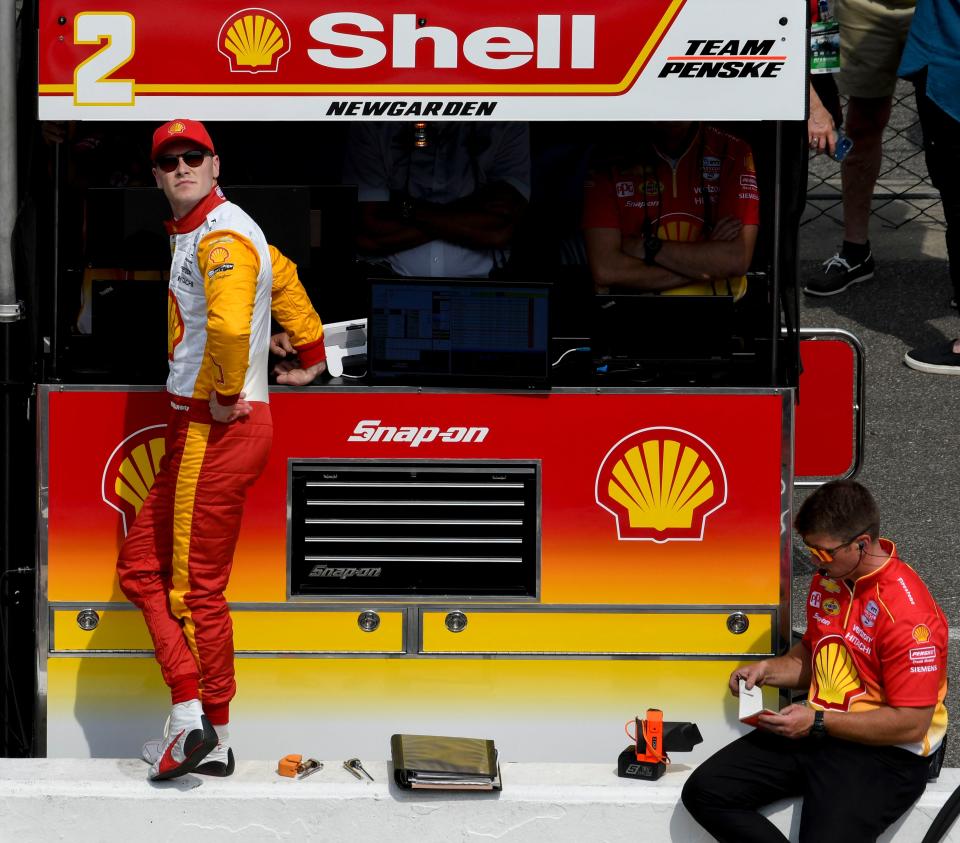
More progress for Penske?
18. We’ll see Sunday just how much Team Penske’s improvement of its 500 program is real, though word around the paddock from watching Josef Newgarden, Will Power and Scott McLaughlin the last week suggests it has. It's continued lack of competitive pace in qualifying may make that tough, though. For the second consecutive year, Power logged Penske’s lone appearance in the Fast 12 and will start 12th, with McLaughlin (14th) and Newgarden (17th) in the next two rows. In the last three 500s, including 11 total starts, Team Penske drivers have made just two top-10 finishes: Newgarden, 5th, 2020; Simon Pagenaud, 3rd, 2021.
19. Should a driver from Team Penske, Andretti Autosport, Ed Carpenter Racing or A.J. Foyt Racing (among others) emerge victorious Sunday, we’ll see a fifth different team in as many years celebrate atop the Victory Podium at IMS in a period of much parity.
20. Looking for underdog picks? I wouldn’t dive too deep into the field. Only four of the last 35 winners of the 500 have come from 16th or lower, with several chunks of that time frame made up of stints where passing was rampant. IndyCar has added several aerodynamic options for Sunday’s race, but drivers have largely lamented their lack of effectiveness from deeper than four or five cars in a line – something that will likely make it tough for someone in the talented Rows 6 (Conor Daly, Josef Newgarden and Ryan Hunter-Reay) and 7 (Romain Grosjean, Helio Castroneves and Colton Herta) to maneuver their way into contention without something truly wacky.
21. If you’re Scott McLaughlin, Colton Herta, Romain Grosjean, Callum Ilott or Rinus VeeKay, there’s something a little extra riding on just making it to the finish line this year, after they all crashed out with 50 or more laps to go in 2022.
22. As successful as his still young IndyCar career has been at 23 years old, Colton Herta continues to look for that first solid 500 performance. In four starts, two of the four have seen the Andretti Autosport driver sidelined before the checkered flag and finish 30th or worse. Herta’s best 500 finish came in 2021 (8th).
23. The Indianapolis Motor Speedway has been a cruel place to Marco Andretti since he snagged his family’s first Indy 500 pole in decades in August of 2020. How cruel? Andretti become one of a small pool of 500 polesitters never to lead a lap that year, and in the two races since, he’s struggled with race pace across the month. The 36-year-old, who now just runs a one-off 500 program, hasn’t logged a top-10 since 2017 (8th), with three of those five finishes outside the top-15.
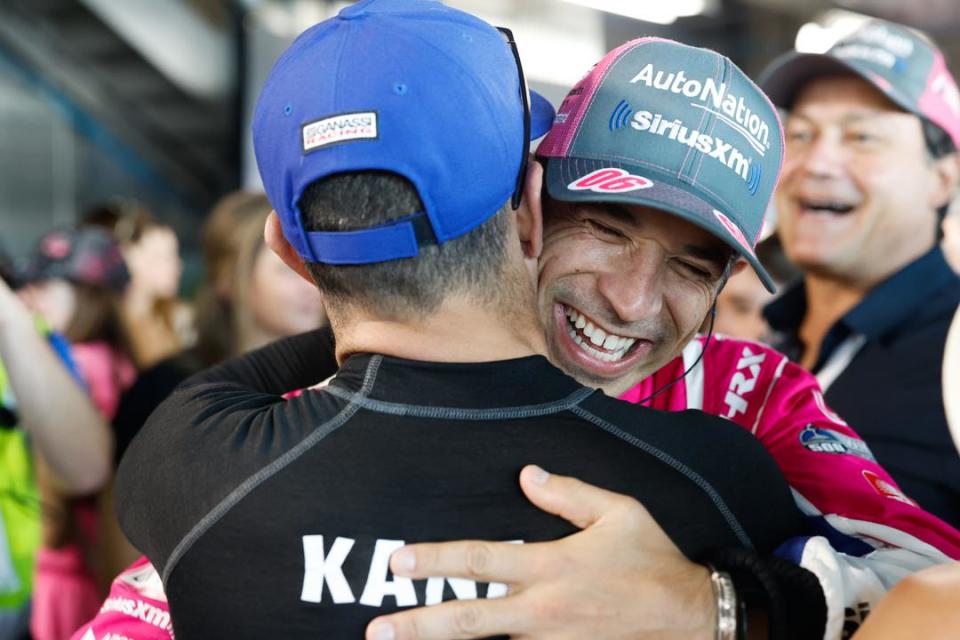
Age is just a number
24. For the first time since then-49-year-old Buddy Lazier started the 2017 Indianapolis 500, have one – two drivers could break Al Unser Sr.’s mark for the oldest winner (47 years, 360 days). The Brazilian duo of Tony Kanaan and Helio Castroneves both have turned 48 since last year’s race. The former has promised Sunday will be his last 500, but Kanaan has said he wants Castroneves to keep going until he’s at least 50. The four-time winner has said he’ll keep showing up at IMS for the Sunday of Memorial Day weekend with helmet in hand until owners stop giving him rides.
25. Even more drivers have a chance to become the youngest winner of the 500, aiming for Troy Ruttman’s record from 1952 (22 years, 80 days). Sting Ray Robb, David Malukas and Christian Lundgaard are just 21 years old. In what seemed like a solid shot to challenge it when he burst onto the scene days shy of his 19th birthday, Colton Herta will make his first 500 start on Sunday without a chance to break the mark.
26. The last couple 500s have seen an abnormally small amount of attrition, with 2021 now holding the record for the most cars running at the finish (30) and 2021 and 2022 sharing the mark for the most cars finishing on the lead lap (22). Combined, we’ve seen nine single-car crashes in those two 500s. For the sake of the drivers and teams, here’s hoping that trend continues.
27. Despite continuing to add pieces to the car, IndyCar has found a way to take its cars to another level in speed (at least on qualifying weekend) the last two years, with this field setting the latest bar as both the fastest front row and fast field in the race’s history. In addition, the entire front row logged qualifying four-lap averages in the Fast 6 faster than what last year was the fastest pole speed and second-fastest qualifying run in 500 history.
28. More perspective on this year’s qualifying speed: Graham Rahal’s four-lap average in the Last Chance Qualifier would’ve started on pole in 2015, though cars qualified in race trim due to weather issues. It also would’ve started on pole in 2013.
29. Should he make good use of his front-row starting spot, Rinus VeeKay (No. 21) could erase No. 21 from the list of car numbers that have never won the 500 – one that also includes 18 (David Malukas), 29 (Devlin DeFrancesco), 33 (Ed Carpenter), 44 (Katherine Legge), 45 (Christian Lundgaard), 55 (Benjmain Pedersen), 60 (Simon Pagenaud), 77 (Callum Ilott) and 78 (Agustin Canapino).
Penske's projects, progress continue
30. As Roger Penske continues to invest in IMS – to a tune of nearly $50 million in changes since he took ownership – and sell tickets at a pace rarely seen at the track in the last quarter-century, it’ll be interesting to see where The Captain takes this year’s race purse. Last year’s 500 purse came in at a record $16,000,200, topping one that landed just over $14.4 million in 2008, so it would seem quite possible, with ticket sales trending up year-over-year, that that amount could continue to rise. For his win, Marcus Ericsson took home $3.1 million, also the highest payday for a winner in race history.
31. Penske can only hope the race’s national TV ratings mirror the level of hype we’ve seen locally from IMS’ practice and qualifying attendance marks. A year ago, NBC hit just 4.8 million viewers, including its digital audience, the second-lowest mark in the race’s history (And lowest outside of the pandemic-altered race in 2020). That followed a strong rebound in 2021 (5.581 million) for Helio Castroneves’ record-matching victory. As motorsports viewership (NASCAR and F1) has been down in some form this year compared to 2021, IndyCar has followed suit, coming in a year in which the series has invested an eight-figure sum in new marketing initiatives.
32. On Thursday, IMS president Doug Boles said the track expects to have less than 5,000 grandstand seats unsold come race day, meaning it will have sold 5,000 more than a year ago. In 2022, Boles said the track hosted roughly 325,000 fans, and he told IndyStar earlier this month the ticket office had been tracking for a 1% increase, year-over-year, on total patrons – something he said this week has continued.
33. Not attending Sunday’s race in-person? Be sure to tune into IndyStar’s Pit Pass Live show we tape from the base of Gasoline Alley starting at 8:30 a.m. and getting you up close to the start of NBC’s over-the-air coverage (11 a.m.). We’ll run through the grid, break down the storylines of the month, debate how we think Sunday’s 200 laps will go and chat with a stellar list of guests that includes Doug Boles, Marcus Ericsson and Mario Andretti.
This article originally appeared on Indianapolis Star: Indy 500 2023: Drivers, stories to watch Sunday in Indianapolis

 Yahoo Sports
Yahoo Sports 
